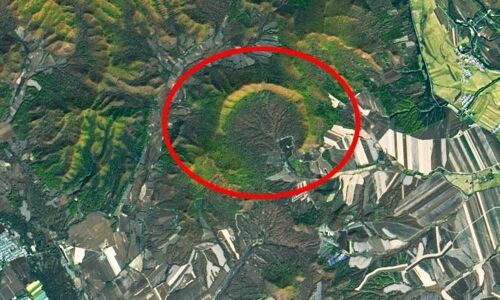
Scientists Discover the World's Largest Known Crater from the Past 100,000 YearsThe largest impact crater on Earththat originated in the last 100,000 years is a crescent-shaped crater in Northeast China.
As per the NASA Earth Observatory statement, the only other impact crater ever discovered in China was discovered in Xiuyan county of the coastal province of Liaoning prior to 2020. Scientists confirmed in July 2021 that a geological feature in the Lesser Xing'an mountain range had evolved as a result of a space rock striking Earth. The scientists described the newly discovered impact crater in the journal Meteoritics and Planetary Science later that month.
According to NASA, the Yilan crater is about 1.15 miles (1.85 kilometres) broad and created between 46,000 and 53,000 years ago, based on radiocarbon dating of charcoal and organic lake sediments from the site. The ten largest impact craters on the planet.
The team discovered a nearly 1,000-foot-thick slab of brecciated granite beneath more than 328 feet of layered lake and swamp sediments. Brecciated granite is granite made up of many rocky fragments cemented together in a matrix. This rock has the telltale signs of being hit by a meteorite.
As the granite heated and cooled fast during the impact, for example, shards of the rock show indications of melting and recrystallization. According to Forbes, some parts of the rock escaped melting and instead include "shocked" quartz that fractured in a particular pattern as the space rock plummeted down.According to the NASA statement, the crew also discovered teardrop-shaped glass fragments and pieces of glass perforated with tiny holes caused by gas bubbles, both of which indicate that a high-intensity impact occurred there.
A section of the Yilan crater's southern rim is missing, making the geological structure appear crescent-shaped from above. According to Chen Ming, one of the article's authors and a research fellow at the Guangzhou Institute of Geochemistry, such crescent-shaped impact craters are rather unusual on Earth. According to NASA, the Landsat-8 satellite obtained a stunning image of the crater's northern rim in October 2021, and scientists are now examining how and when the southern rim vanished.
The so-called Meteor Crater in Arizona previously held the record for the largest impact crater younger than 100,000 years; it's between 49,000 and 50,000 years old and is 0.75 miles (1.2 km) in diameter. By comparison, the Xiuyan crater is 1.1 miles across, although its age is unclear.